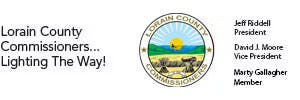There’s a universe to explore at Nielsen Observatory, located at the equestrian center, just down the road from the Carlisle Visitor Center. This is where the Black River Astronomical Society (BRAS) meets twice a month with telescopes available for guests.
“Our mission is to share the science of astronomy and beauty of the night sky with the public,” says Steven Schauer, president of the 75-year-old organization that hosts “star parties” twice monthly March to November and once a month December through February.
Nielsen Observatory features a roll-off roof and two permanently mounted 14-inch telescopes, and there are a number of spares in storage that “we trot out and set up for people to look through,” Schauer says. Electric outlets on patios on either side of the building provide power for guests who bring their own scopes.
“It’s fun to show off Saturn and Jupiter — those are the two ‘wow’ objects in the night sky,” Schauer says of sharing a passion for astronomy with the public. He guesstimates viewing Saturn at least 1,000 times because it never gets old.
“You can see its rings and golden color, and more than a few times, people have accused us of having a picture on the end of the telescope because it almost doesn’t look real,” Schauer relates.
Gazers can see shadow bands on Jupiter that are clouds spanning across the planet’s surface. “We can usually see four of the Galilean moons that are almost aligned, and quite often we will see a moon that goes between us and Jupiter,” he says.
While Mars is “elusive” and unpredictably visible, Schauer says, during a clear night and when it is closer to us, you might spot its surface features and get “some astonishingly good looks.” Those glimpses might include a view of its mountains. The shield volcano Olympus Mons is higher than Mount Everest, he shares.
Public observing events take place Friday evenings, with Saturdays as back-up dates. Check out blackriverastro.org/calendar.html for upcoming dates.







